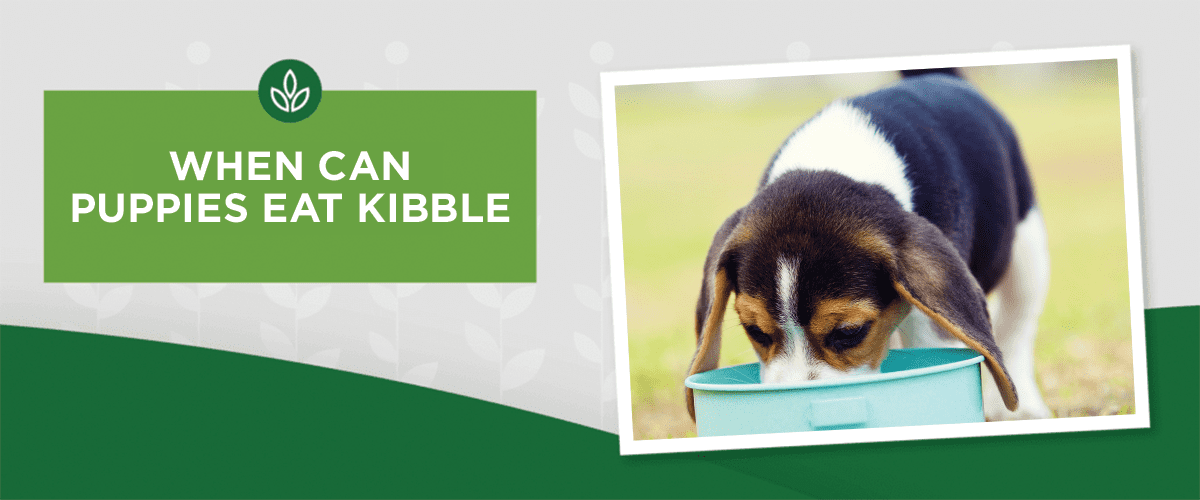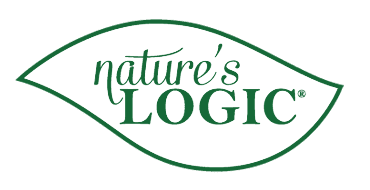When Can Puppies Eat Kibble?
Switching your puppy from soft food to kibble is typically the first step you take in helping your pup start with solid nutrition. This transition is an important one for their happiness, growth, and developmental needs. As their teeth start to come in and they show an interest in exploring food, introducing dry food can promote strengthened jaw muscles and positive dental health. Hard food also encourages their natural chewing behavior and can help foster positive chewing habits, in the hopes of steering clear of unwanted nibbles on footwear or other household items. So, when is the ideal time to introduce kibble? Let’s explore the key considerations of your puppy’s dietary transition from softer, moistened food to harder, dry kibble.
Puppy Feeding Timeline
Puppies can start eating soft, moistened, solid food when they are around 3 to 4 weeks old. Before that, they relied solely on their mother’s milk or a suitable milk replacer. The transition from milk to solid, usually soft food, is called the weaning process, which, as mentioned, typically begins around the third or fourth week of life. A general timeline for introducing solid food and kibble to puppies can look something like this:
Week 3-4
Start introducing moistened food fit for puppies. You may mix it with water, bone broth, milk, or a puppy safe liquid, if needed. A good ratio is 3 parts food to 1 part liquid, to create an oatmeal-like consistency.
Offer the puppy food in four separate feeding intervals throughout the day, allowing them to eat as much as they desire within a 20-minute timeframe at each feeding. To ensure freshness of their soft food, do not leave moistened food out for more than 30 minutes.
Week 5-6
Continue to feed up to 4 times per day and gradually reduce the amount of liquid and increase the thickness of the moistened food.
Week 7-8
By this time, many puppies are ready for dry kibble up to 4 times per day. Look for a food that is approved for all life stages or specifically formulated for puppies.
Week 8 and On
Continue to feed up to 4 times per day. Within a few months, the puppies may be transitioned to a self-feeder. After age one, feed to maintain good body condition, using the feeding chart as a guide.
The above timeline is a general guide, many factors can impact this including your dog’s breed, size and other needs. Consult with your vet on questions for your specific puppy.
Signs Your Dog May be Ready for Kibble
Other than age, there are some signs that may indicate your puppy is ready to transition to kibble. These might look like:
- Teeth Development: When your puppy’s baby teeth start to come in, and they exhibit an interest in chewing or gnawing, it may be a signal that they are ready for solid food.
- Curiosity about Food: If your puppy shows curiosity about your own or other pets’ food, it may be an indication that they are ready for a more solid diet.
- Steady Weight Gain: Puppies should be steadily gaining weight during their early weeks. If your puppy is maintaining a healthy weight and seems energetic, it may be time to introduce kibble.
- Interest in Mother’s Food: If a mother dog is present, some puppies may start showing interest in their mother’s solid food, indicating they are ready for a transition.
- Weaning Behaviors: Puppies that naturally start to explore and show a willingness to try different textures may be ready to transition from softer foods to kibble.
Always talk to your veterinarian before making changes to your puppy’s diet to ensure it aligns with their specific health needs and development.
Choosing the Right Kibble
Choosing the right kibble for your puppy is all about finding a brand of food that’s well-balanced with the proper nutrients to support their rapid growth and development, like Nature’s Logic dog kibble. While kibble is generally the easiest and most economical way to be sure your pup is getting what they need, some pet owners opt for a raw food diet.
Some things to look for in their food include:
- High quality protein: Growing pups need lots of protein to support their rapid growth. Look for recipes that prioritize high quality protein sources.
- Look for whole, recognizable ingredients: High quality proteins, whole grains like brown rice or oats, and fruits and vegetables are good signs.
- Kibble size: When looking at different brands, be mindful to find a recipe for your puppy that has kibble pieces appropriate for your puppy’s size and jaw development.
- Avoid corn, wheat, soy, peas, and potatoes: Look for recipes that prioritize more high quality protein inclusion and deliver whole food nutrition offering valuable nutrients to your pup.
- Avoid synthetics, artificial additives, and fillers: Steer clear of synthetic ingredients, artificial colors, flavors, and preservatives.
- No wheat or gluten free: Some puppies can be sensitive to these grains. If you suspect this could be an issue for your pup, work with your vet. You may consider a grain free diet or a limited ingredient diet.
Challenges, Transitioning and Feeding Tips
Some puppies may have a tougher time transitioning from wet food to dry kibble. If this is the case, moisten their dry dog food with water, broth, milk, or another puppy friendly liquid. This will help them get used to the harder kibble as their teeth and jaw strengthen. As a reminder, to ensure freshness of their soft food, do not leave moistened food out for more than 30 minutes.
Puppies will typically eat more often during the day with smaller amounts being consumed at each meal. You may start with offering up to 4-6 meals a day, then slowly, over time, work to 2 meals per day. Keep in mind this depends on caloric needs of the individual dog, breed, size, overall condition, and more.
A good feeding tip if you’re headed out for a walk or physical adventure with your puppy is to try to feed them a couple hours prior to the activity. Much like us humans, a puppy’s body needs time to process and break down the nutrients they get from their food so they can absorb and use them during activity. We don’t like to eat a big meal before we go for a run; our pups don’t either.
Feeding Your Puppy Kibble
Starting your puppy out on a high quality, natural diet can help promote good health. Properly weaning them from their mother’s milk to soft food and on to dry kibble is an important part of introducing a healthy diet that supports their developmental milestones. If you’re looking for an all natural food option for your puppy, explore Nature’s Logic.









